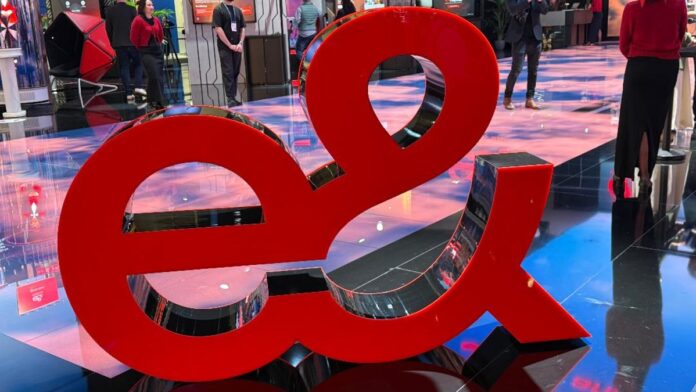e& said that the achievement was made possible by aggregating FR1 bands at 2.1GHz and C-band, paired with Uplink 3Tx on a CPE at a live 5G site
In sum – what to know:
e& hits 600Mbps uplink – The Arab telco sets global record on a live 5G network using commercial hardware and Release 17-compliant technology.
Step forward for 5G-A – Achievement showcases how band aggregation and 3Tx uplink can enable higher capacity for next-gen enterprise and consumer applications.
Real-world impact expected soon – Once compatible devices are available, faster uplinks will support industrial automation, smart cities and high-resolution content uploads.
Emirati-based telco e& UAE claimed a new world record by achieving an uplink speed of 600Mbps on a live 5G network.
In a release, the Arab carrier noted that this achievement was made possible by aggregating FR1 bands at 2.1GHz and C-band, paired with Uplink 3Tx (three transmit antennas) on a commercial customer premises equipment (CPE) at a live 5G site, fully compliant with 3GPP Release 17 standards.
The telco also noted that the 600Mbps uplink speed will enable enterprises to enhance operations, with smart factories and logistics hubs uploading massive sensor data in real time to power AI-driven automation and predictive analytics.
In addition, cloud-hosted collaboration is enhanced, supporting instant uploads for 3D modeling, augmented reality (AR) and virtual reality (VR) workflows.
For consumers, this speed level will redefine digital life, empowering content creators to upload 8K videos and immersive live streams to platforms like YouTube or TikTok in seconds. With this augmentation of uplink speeds, gamers will be able to enjoy lag-free cloud connectivity, while smart homes will operate with efficiency, uploading high-definition footage and IoT data instantly.
Anchored in 3GPP Release 17, this world-record leverages advanced features like enhanced mobile broadband (eMBB) and ultra-reliable low-latency communications (URLLC) to deliver next-level connectivity, the Arab telco added.
e& UAE has recently launched a commercial 5G network slicing product for business customers, leveraging its 5G standalone (SA) network. The firm said the new solution delivers tailored 5G connectivity to meet the evolving needs of industries and organizations across both public and private sectors.
Also, the UAE telco and Qualcomm have recently announced a partnership to develop next-generation 5G and edge AI technologies. The deal targets industrial gateways, XR hardware and on-device AI to drive smarter, faster enterprise edge deployments.
In November last year, e& UAE completed what it claimed was to be a world-first deployments of Ericsson’s dual-band Massive MIMO radio, the AIR 3229, on its network. The Swedish vendor said the deployment would boost network performance, increase capacity and reduce carbon footprint. Its dual-band AIR 3229 radio supports simultaneous 5G service delivery on both the 2.6 GHz and 3.5 GHz bands, allowing for a doubling of time division duplex (TDD) carrier components (two to four) at high-capacity 5G sites.
The vendor also highlighted that this solution enhances network performance while addressing challenges related to site acquisition, installation complexity and tower load management. Ericsson’s solution reduces power consumption by 20% and minimizes the tower load by 25%.
Ericsson and e& UAE have previously signed a Memorandum of Understanding (MoU) for the collaborative exploration of 6G technology, its use cases and future network evolution.
Ericsson noted that the 6G agreement with the Arab telco will serve as an early engagement for defining the next generation of future mobile network evolution. It will also include a series of technical discussions and engagements aimed at jointly exploring key 6G technology concepts, added the vendor.
e& UAE also previously said it had reached a new record speed of 62 Gbps after it aggregated multiple carriers across high-band and low-band over simplified architecture. The telco said it used “cutting-edge” hardware and “sophisticated” algorithms like MU-MIMO (multi-user, multiple input, multiple output) to achieve this 5G-A record speed.

